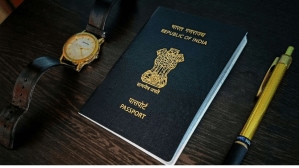Lost, found, or stolen — populations across the globe draw their histories and origins from the artifacts that the generations prior left behind. Where they come from and where they end up over the centuries are often two separate stories. Last week, Pope Leo the XIV announced that the Vatican would be returning 62 artifacts that originally belonged to a host of indigenous communities based in Canada. The recent past has seen a variety of conversations on the real heritage of artifacts and where they ought to be displayed.
This return is the culmination of a movement that went on for years, led by the indigenous communities of Canada, to which the former Pope responded with an apology, and the current Pope followed through in action. It was to undo or rectify the actions of 1925, which is when the artifacts had been transported to Rome for an exhibition, on the orders of Pope Pius XI.
Until now, the museums in Canada were displaying reproductions of certain artifacts like gloves, shoes, and mittens, moccasins, smoking pipe, and more, the original pieces of which were kept at a museum at the Vatican as part of the ‘Vatican Missionary Exposition’ of 1925, which displayed over one lakh artifacts from Africa, the Americal, Oceania and Asia.
As per the Vatican’s narrative, these were gifts given to the papacy years ago. The artifacts included an Inuvialuit kayak, a type of boat, a significant piece of Inuvialuit culture and heritage. However, the Vatican and the Canadian indigenous people are not the only ones debating the politics of historical objects of cultural relevance finding place other than where they belong.
Major Artifact Returns from Iraq to India
This year, the Iraqi State Board of Antiquities and Heritage announced that a whopping 27,000 artifacts were being brought home to the Iraqi National Museum from all over the world. In July 2024, the minister of culture and tourism of Iraq had announced that Iraq would continuously make attempts to collect all the lost national treasures that have been subject to looting and destruction since the US invasion in 2003. Since the Iraq government’s efforts, close to 50,000 artifacts have been returned to Iraq, including the Gilgamesh tablet dating back to 2700 BC, as well as about 6,000 pieces that had been borrowed by the British Museum.
Similarly, the national museum of Cambodia in Phnom Penh is facing a space shortage as over the last six years, nearly 300 stolen artifacts have been returned to the country from collectors across the world — so much so that the museum director has gone on record fretting about a space issue. Even now, almost 4,000 of Cambodia’s stolen artifacts are still in the possession of other private collectors and museums.
In another incident, an old painting titled the Female Portrait stolen from the National Museum of Art during the second World War was also returned to the museum earlier this year. A Mayan artifact, likely a broken section of a limestone building, was returned to the National Museum of Mexican Art, after 40 years of being in the possession of a philanthropist-collector in Chicago. Earlier in 2021, India had also made news in this regard, when the National Gallery of Australia had returned 14 stolen pieces from its Asian art collection, since they had been bought from a dealer who was later convicted in an art trafficking ring.
Reportedly, since 2014 to 2024, a whopping 640 stolen artifacts have been returned to India, as opposed to only 13 retrieved between 1947 and 2014. However, only about 13 of them have been returned to the original places they were stolen from, be it a temple, or a protected location. They are being stored with the Archaeological Survey of India, in their archive of ‘Confiscated and Retrieved Antiquities’. Further, the United States of America in November 2024 returned 1,400 artifacts, worth over $10 million to India. Several artifacts had exchanged hands over the years and wound up at the Metropolitan Museum of Art in New York.
These exchanges are facilitated by UNESCO if there is contention between the two players, based on the 1970 Convention on the Means of Prohibiting and Preventing the Illicit Import, Export and Transfer of Ownership of Cultural Property. UNESCO in October this year opened a virtual museum of lost and stolen items, based on lists provided by the countries. The idea is to eventually empty this museum and repatriate all the stolen artifacts to their original locations.
Repatriation Paradox
But this global exercise comes with its complications. While the return is being celebrated with headlines, the fate of the artifacts afterwards is an issue. Taking India for example or even Cambodia, both countries are struggling with where and how to keep these returned artifacts — in India, a majority of the pieces are awaiting repatriation under the supervision of the ASI since last year, while in Cambodia, the director of the national museum struggles to find funding to expand the museum to accommodate all the returned pieces.








